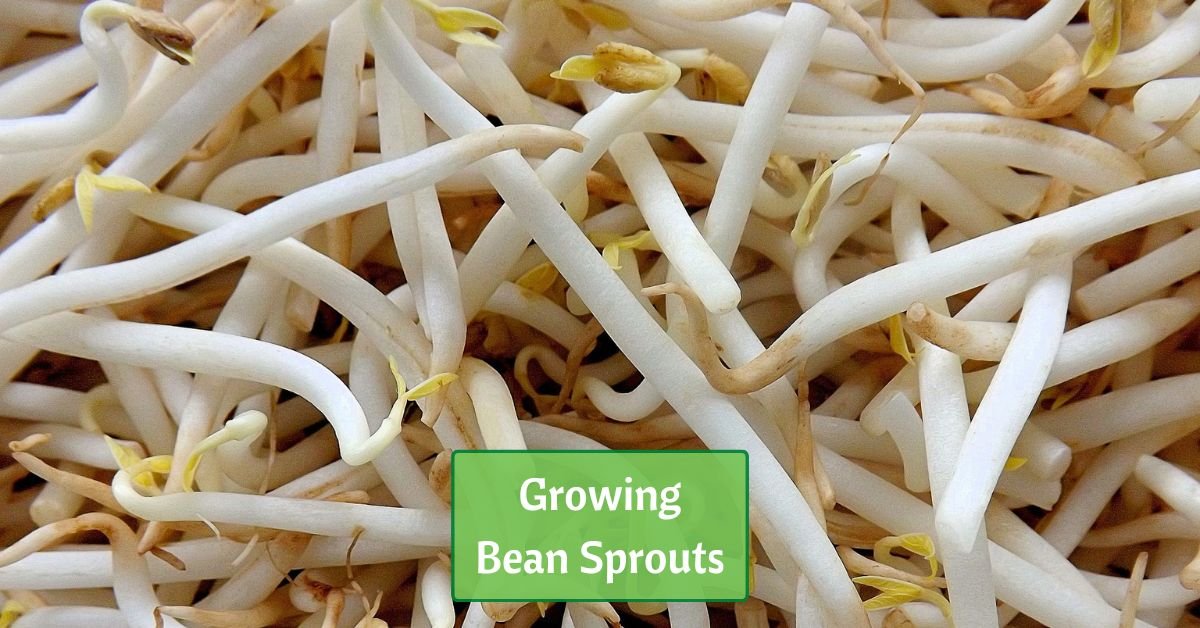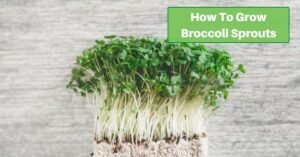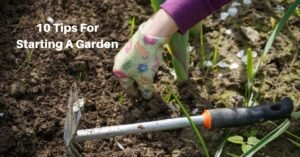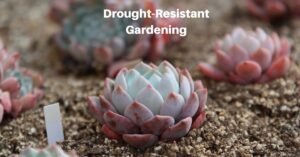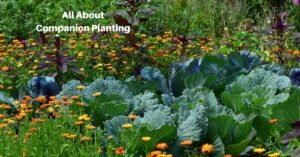Bean sprouts are a delicious part of many meals, from the popular Vietnamese soup “phở to all kinds of curries, hummus, and even pancakes. They even make a great snack on their own! Sometimes known as “mung bean sprouts” or “green gram sprouts,” they’re a great addition to your garden.
These sprouts are obtained from the green mung bean (Vigna radiata) and are celebrated for their crisp texture and fresh flavor. In this article, we’ll delve into the art of growing bean sprouts in your garden, from selecting the right seeds to harvesting these crunchy and nutritious greens.
Understanding Bean Sprouts
Bean sprouts are young seedlings of the mung bean plant. They are a member of the legume family, like peanuts, peas, lentils, and chickpeas.
These sprouts are commonly used in various cuisines worldwide, celebrated for their mild flavor and high nutritional value. The name “mung” is thought to originate from the ancient Sanskrit word “mudga.”
Selecting Bean Sprout Seeds
The key to successful bean sprout cultivation begins with choosing high-quality seeds. Look for seeds labeled specifically for sprouting, as they are free from pathogens that can be harmful if consumed raw. You can find these seeds at garden centers, health food stores, or online retailers. Ensure the seeds are fresh, within their expiration date, and free from any signs of damage or contamination.
Order Mung Bean Seeds Online
Sprouting Container and Soil
Bean sprouts can be grown in shallow containers, seed trays, or directly in your garden bed. Select a clean container with drainage holes to prevent waterlogging. Fill the container with a well-draining, seed-starting mix or potting soil. Maintaining a sterile environment is crucial to prevent the growth of harmful bacteria.
Planting Bean Sprout Seeds
Begin by evenly distributing the bean sprout seeds over the surface of the soil in your chosen container or garden bed. You don’t need to bury the seeds; gently press them into the soil to ensure good contact. Aim for a single layer of seeds. Avoid overcrowding, which can hinder proper air circulation and lead to mold growth.
They are a great crop to plant in an outdoor container so that you can easily reach them and provide adequate care.
Watering and Providing Adequate Moisture
After planting the seeds, water the soil gently but thoroughly. To maintain consistent moisture, mist the soil or use a spray bottle to avoid disturbing the seeds. Keep the soil evenly moist but not waterlogged. Place the container or bed in a location with indirect sunlight or under a grow light to encourage germination.
Maintaining Proper Air Circulation
Bean sprouts require adequate air circulation to prevent mold or bacterial growth. Cover the container or garden bed with a breathable cloth or mesh, securing it with a rubber band or twine. Position the container or bed in a well-ventilated area with indirect sunlight. Avoid exposing the sprouts to direct sunlight, which can lead to excessive drying.
Rinsing and Draining
Rinse the bean sprouts twice a day with cold, clean water. Use a gentle flow of water to remove any residual seed husks or potential contaminants and provide the sprouts with essential moisture. After rinsing, allow the excess water to drain completely from the container or bed. Ensure proper drainage by slightly angling the container or bed.
Harvesting Bean Sprouts
Bean sprouts are usually ready for harvest in about 4-7 days, though the timeline may vary depending on environmental factors. When the sprouts reach your desired length, typically around 3-6 inches, it’s time to harvest them. To do so, cut the sprouts just above the soil level using clean scissors or a sharp knife.
Storing and Enjoying Bean Sprouts
Freshly harvested bean sprouts can be stored in an airtight container in the refrigerator for up to a week. Ensure they are thoroughly dry before storing to prevent moisture-related spoilage. Bean sprouts can be used in salads, stir-fries, sandwiches, and as a garnish for various dishes, adding a delightful crunch and mild flavor to your culinary creations.
Troubleshooting Issues with Growing Bean Sprouts
While growing bean sprouts is relatively straightforward, here are some common issues to watch out for:
- Mold: Mold growth can occur if the sprouts are not adequately rinsed and drained or if they are exposed to excessive moisture. Ensure proper ventilation and drainage to prevent mold.
- Seed Contamination: Always use seeds specifically labeled for sprouting to avoid potential pathogens. Additionally, maintain cleanliness throughout the sprouting process to prevent contamination.
- Leggy Sprouts: If your sprouts are too long and leggy, it may be due to insufficient light. Ensure they receive indirect sunlight or use a grow light for adequate illumination during the growing process.
Growing bean sprouts in your garden is a straightforward and rewarding endeavor that allows you to enjoy the crisp, fresh goodness of these nutrient-packed greens. They’re great for growing in your kitchen or an elevated outdoor container. They take some special care to prevent mold and other issues, but grow quickly, so you’ll soon be enjoying them in many favorite dishes!

